Wednesday 3rd May
After a quiet night on our scruffy, dirty car park we walked up innumerable steps to the heart of Caltagirone. Another one of the UNESCO World Heritage Towns selected for their unique baroque architecture, Caltagirone has another string to its bow. It is a world renowned centre for ceramics.
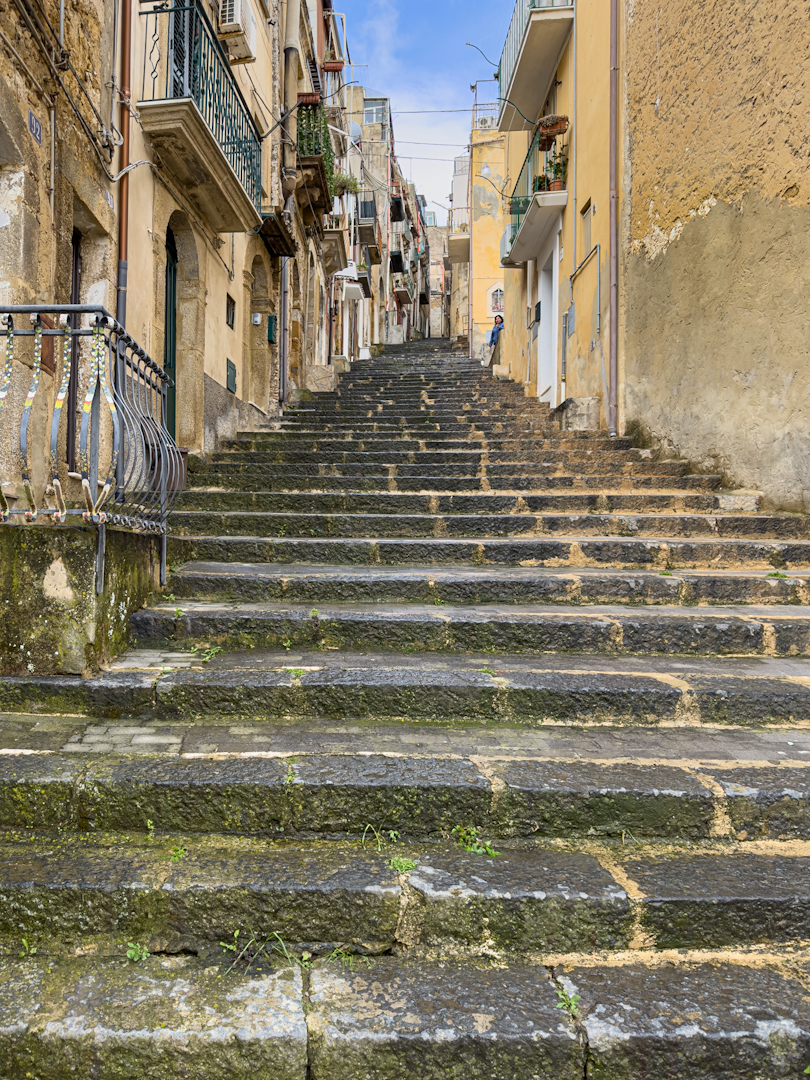
We spent a pleasant couple of hours wandering around the town. The one unique highlight was the Staircase of Santa Maria del Monte. This is a huge set of stairs linking two levels of the town and was originally constructed in the 17th Century. During the 20th Century each step was faced with Caltagirone ceramic tiles. In addition we were fortunate enough to find the steps decorated with flowers and plants. This usually occurs once a year on 6th May. We have no idea why this year they were 3 days early.

Sarah and I had discussed getting a set of mugs for Basil, but when I went into one of the ceramic shops I found that the price was €15 per mug and that seemed a little too steep for everyday mugs that could easily get broken as Basil bounces over Italy’s roads. It also occurred to me, as it has in other places famed for their crafts, how do you know the products are actually made in the town and not in China. We saw a small ceramic workshop making items, so certainly some of the ceramics are genuinely from Caltagirone, but are they all?
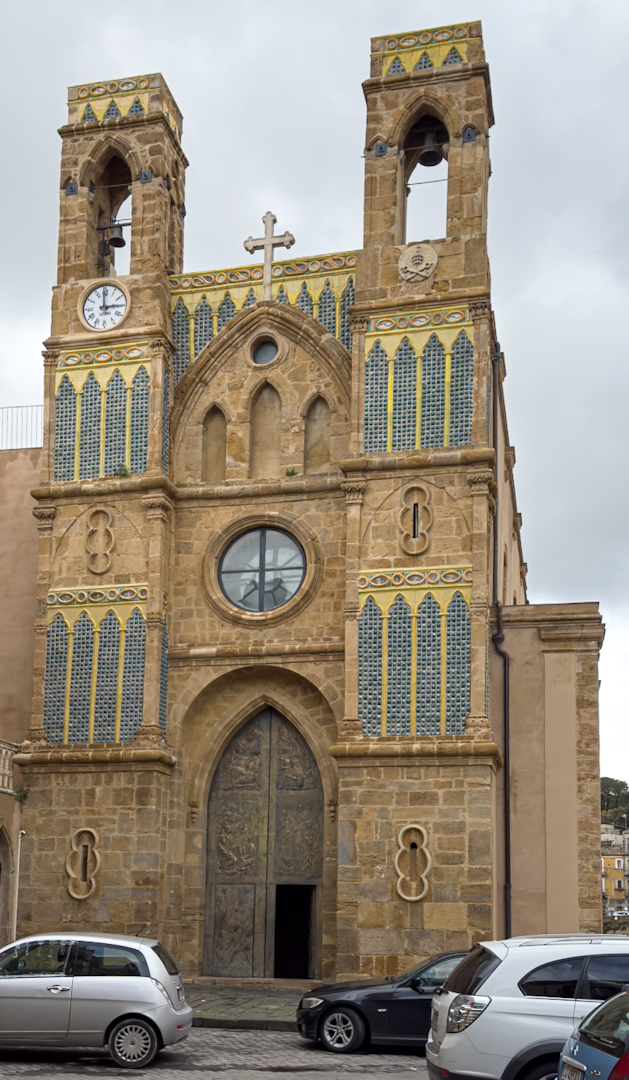
What goes up must come down, unless it’s Donald Trump’s ego. So we ambled downhill to the town’s lovely gardens, which were unfortunately subject to major renovation. But we saw the famous bandstand and Skye persuaded an unsuspecting English woman to throw a pine cone for her!

Although parts of Caltagirone are characterful, there are areas which give the impression that this is a town in decline. Many decrepit abandoned houses line the streets and given the vertiginous staircases that residents must navigate to reach their residences, it’s probably not too much of a surprise.
The journey to our next destination was again enhanced by spectacular displays of wild flowers. At this time of year central Sicily is lush and green. I suspect that in the height of summer it is very different. We had descended from the rocky plateau to an area given over to arable agriculture, including large fields of what we think must have been Aloe Vera.
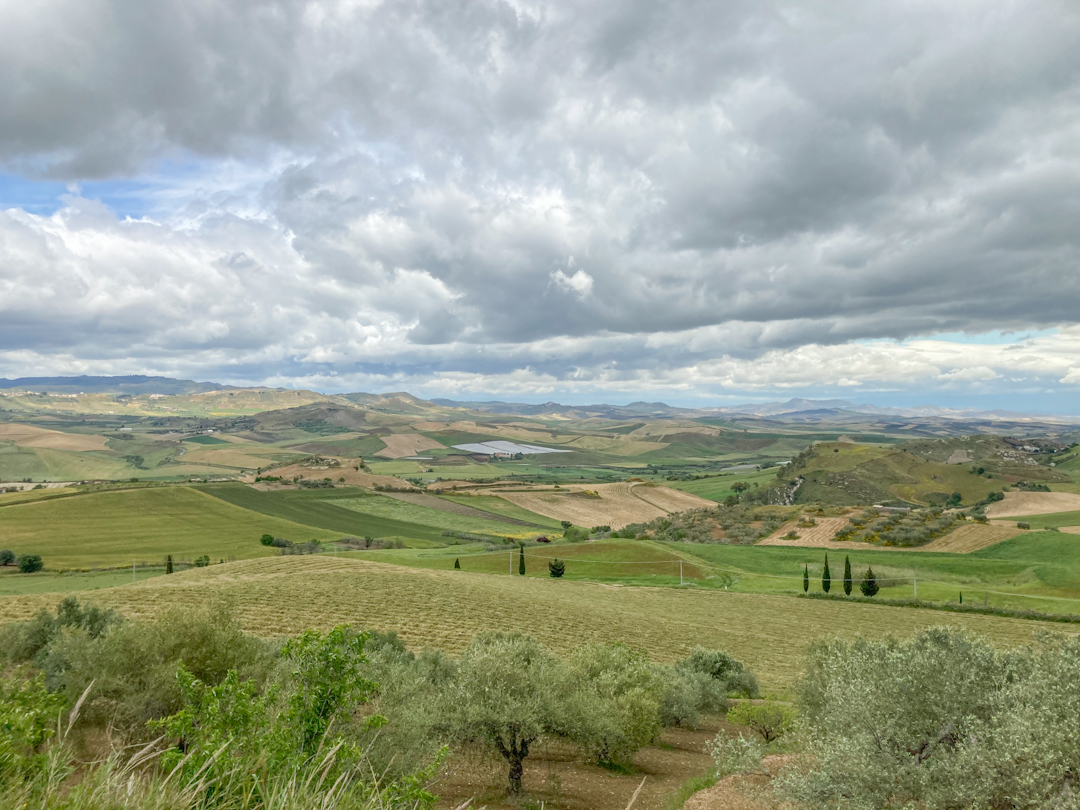
We arrived at our next destination, another UNESCO site. In this case it holds the award on its own merits. It is the Villa Romana de Casale, near the town of Piazza Amerina. This is a 4th Century Roman Villa with the most extensive and varied mosaics in the world, over 3,500 square metres of them.
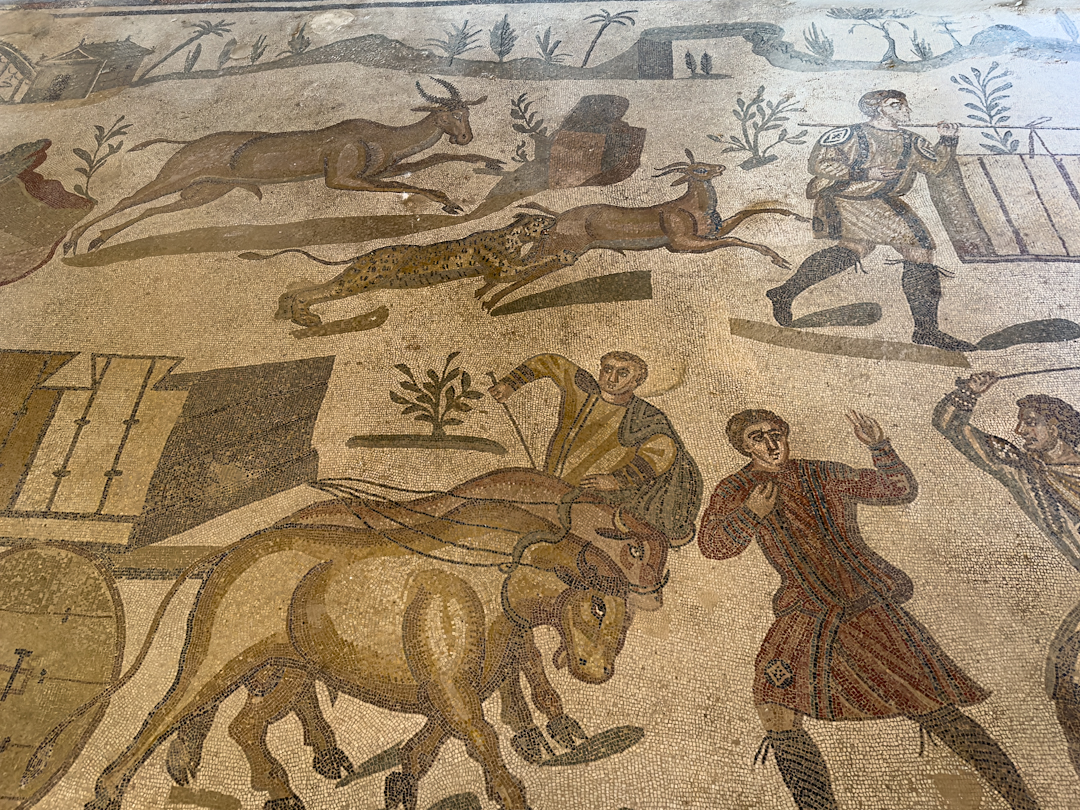
It was discovered in 1950 and the mosaics are so well preserved because in the past they were buried by floods and landslides. The interior of the villa is now entirely covered to protect the mosaics from the elements and visitors can view them from raised platforms which wind their way through the building.
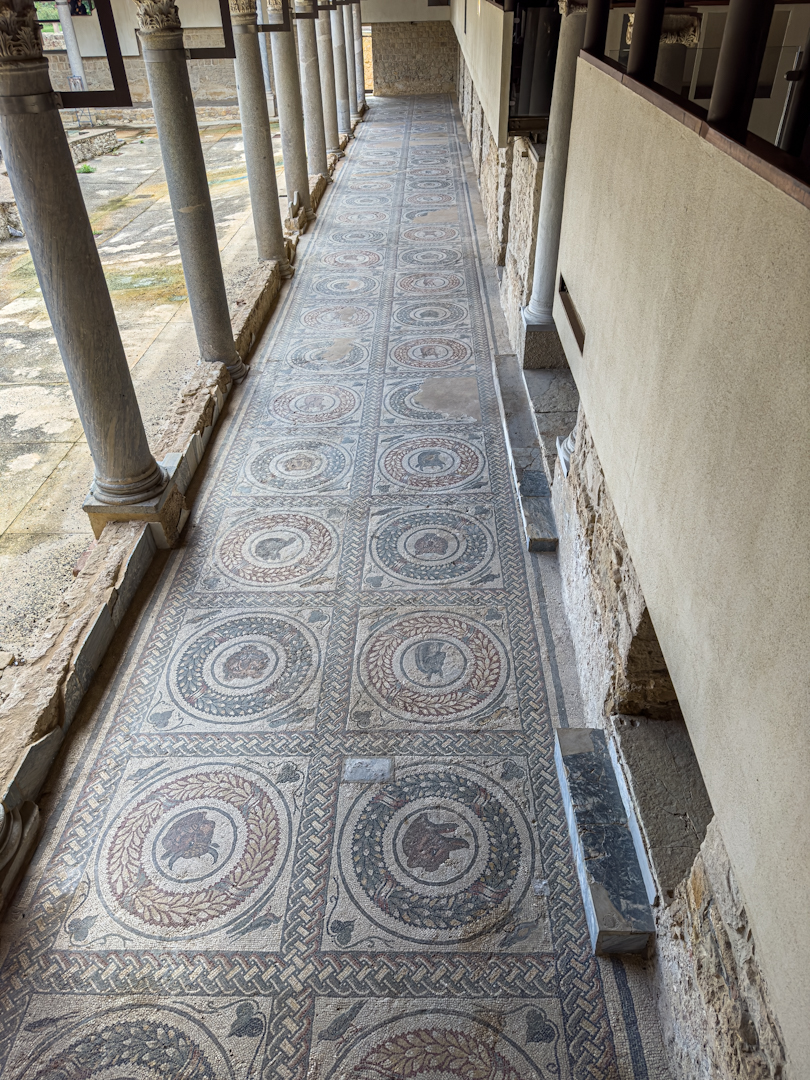
Due to its size it was initially thought to be property of an Emperor but it is now considered that the villa was residence of an aristocrat, possibly a senator or a provincial governor.
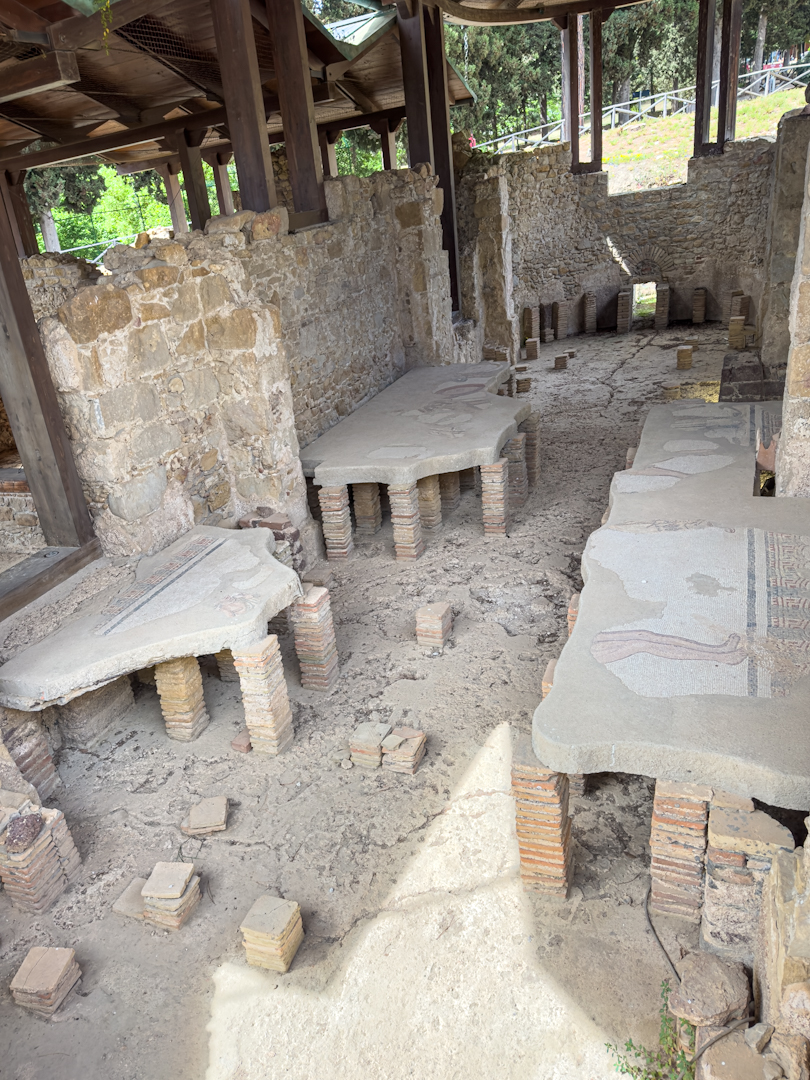
We have visited before in 2014, but it is so spectacular that we decided a return was warranted.
Basil is hoping to stay overnight on the Villa car park. It is €10 for 24 hours and should be very quiet since we are in the middle of nowhere.
